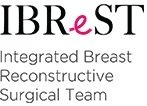Autologous Against Implants
Breast reconstruction is a surgery performed to restore the shape of breasts after tissue is removed during mastectomy (surgery for treatment or prevention of breast cancer).
Breast reconstruction is performed by three methods:
- Using a tissue expander/implant
- Tissue flap reconstruction: using your own tissue (autologous)
- Combination of both
Tissue Expanders and Implants
This is a common 2-stage procedure. The first stage involves the placement of a tissue expander in the pocket formed by the part of the breast removed during mastectomy. The expander is a saline (salt water) or silicone-filled balloon that is gradually inflated over a couple of weeks or months to allow breast muscles and skin to stretch to the desired breast size. This is then replaced by the permanent implant, which can also be filled with either silicone or saline. This preliminary procedure is done to ensure cosmetically desirable outcomes and avoid the risk of the implant coming out through the surgical incision or skin itself.
This method is suggested for women with small to medium-sized breasts with mild ptosis (sag), undergoing bilateral mastectomy, and having healthy mastectomy flaps. The outcomes may not be so favourable for women who are obese, have large breasts, smokers or those who have had breast radiotherapy.
Expander/implant and Acellular Dermal Matrix (ADM)
More recently, expander/implant reconstruction is augmented with a surgical mesh called acellular dermal matrix, which cradles the implant and gives the breasts a more natural shape, contour and droop. The matrix is a very thin white leather made from human or pig skin that is extensively processed and preserved to ensure the safe insertion in human tissues.
The mesh can be used with or without the expander in a one-stage implant reconstruction, most often in conjunction with nipple-sparing mastectomy. This method may be more useful following preventive mastectomy in younger women.
Autologous Tissue Reconstruction using Own Tissue
Women who are not comfortable with the use of implants have the option of using their own tissue to reconstruct their breasts. Autologous reconstruction uses tissue taken from the patient’s stomach, back, buttocks or thigh (wherever there is excess tissue) to shape the new breast. This method of reconstruction allows the creation of breast sag. There are two types of reconstructions: pedicled and free flaps. Pedicled flaps are supported by their local blood supply, but free flaps would be completely separated from their existing blood vessels and reattached through microvascular reconstruction at their new position in the breast. This is a more complex process which requires expertise of your surgeon in microsurgical procedures.
Advantage of Autologous procedure vs. Implants
Autologous tissue flap reconstruction procedures mostly result in breasts that look and feel more natural than breasts with implants. They have a more lifelike drooping effect when compared to implants. They also enlarge or reduce along with your weight fluctuations just like a normal breast would. The risk of infection is comparatively less when compared to an implant reconstruction since your own tissues are used for the reconstruction. As the tissue is harvested from your stomach, buttocks or thigh, you will also benefit from reduced fat in that area after your procedure.

 Gosford
Gosford






